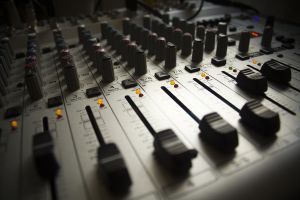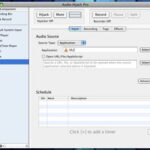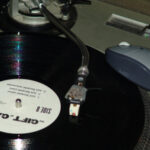The mastering process is one of the least understood parts of recording an album. Some artists consider it synonymous with mixing, but it’s not exactly the same thing; mastering is the art of applying EQ, compression, and managing song breaks to make an album sound consistent in sequence and tweak each song to a professional grade of audio quality.
Before mastering your own album, you should carefully consider whether you’re up to the task. It can take a whole lot experimentation to find out what works, and many artists prefer that the mastering engineer have a fresh and objective ear, which is why mastering is often done at a separate studio. If, however, you’re looking to give mastering an album a try, here are some tips for your first time out.
1. Master at a low volume. Ever notice that songs sound better when played loudly? A truly well mastered song will sound great at any volume. If you master at a high volume, your tracks are likely to sound quite a bit different when played low, and in a bad way; but a song mastered at a low volume will still sound great loud. This is due to the way the sound waves reverberate around a given environment, and how our ears process that sound–but avoiding all the tech-talk, in short you’ll get better sounding tracks and less damage to your ears by running your monitors at a low volume.
2. Make sure you’re getting a consistent sound for each song. You’ll want to check to make sure their levels are similar, and use compression or amplification if a particular song is far too quiet or loud. Make sure the equalization is consistent and that your listeners won’t have to fiddle with treble and bass knobs in their cars and home stereos when listening to your project.
3. EQ carefully. You don’t want to ruin the mix of a song with a ton of EQ, and if the project you’re working on was recorded correctly, you really shouldn’t have to do too much equalization in the first place.
4. Use several different systems for monitoring. You should have a nice, well-isolated and well set up pair of studio monitors for most of the listening you’re going to do on your mastering project, but don’t stop there. Listen to the project on as many different systems as you can, such as your car, someone else’s car, headphones, your home stereo, an old, crappy CD player, and anything else you can get your hands on. You’ll be able to hear the album in a way that the listeners will eventually be hearing it, and you’ll notice problems a whole lot more accurately. When you can finally sit back and listen to your master on any stereo and be happy with the sound, you’ve successfully mastered the album.
5. If you’re mastering digitally, you’re only as good as your software. Check out some pro-grade software such as Adobe Audition, which has a free trial period, or you can use industry standards like ProTools. You really can’t settle for cheap software when you need precision, and mastering certainly requires precision.
Remember to get as many opinions as you can when you start out, and experiment as much as possible, saving backups of all of your previous attempts. Frequent breaks are also advisable, since they can give your brain a chance to reset itself and approach the music more objectively. Mastering’s a difficult science to master, but with enough effort that goal is certainly attainable with the right tools and drive.








